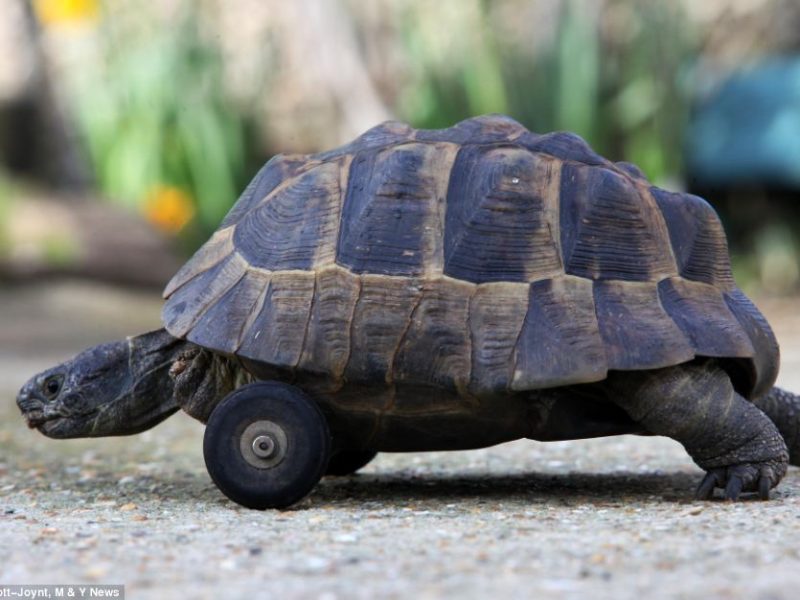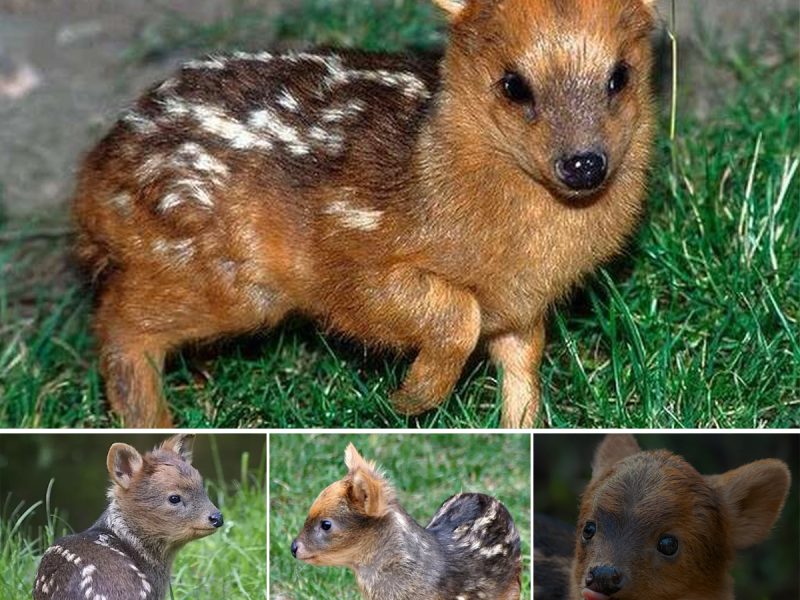Our planet Earth is an incredible place and there are so many different living creatures around us. Some of them are so weird that it’s hard to believe mother nature created something like that. And some are so rare that your chances of seeing them are next to nothing.
1 / 52

As a naturalist, we love nature and believe that the world along with its unique living creatures is astounding. We’ve selected 50 examples of species most of us have never even heard of. Don’t miss the bonus at the end of the article since it may be the coolest part!
2 / 52
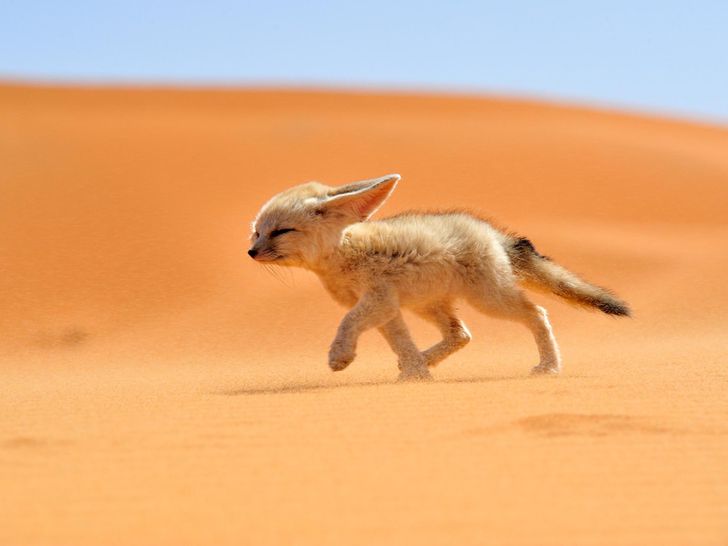
Fennec fox: The fennec fox’s unique build helps it thrive in the desert. Its huge ears are its signature characteristic, and its paws are covered in thick fur to protect it from the hot sand. What they lack in size they make up for in personality. They even purr like a cat when they are happy. These foxes dwell in small communities, each inhabited by perhaps ten individuals. Like other canids, male fennecs mark their territory with urine and become aggressive competitors when mating season arrives each year. Fennec foxes are opportunistic eaters. They forage for plants but also eat rodents, eggs, reptiles, and insects. Like most desert dwellers, the fennec fox has developed the ability to go for long periods without water.
3 / 52
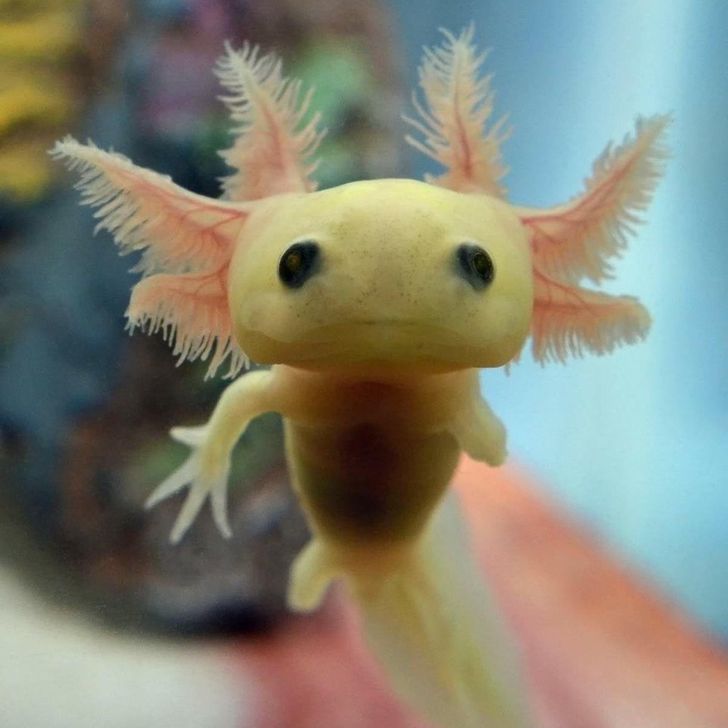
Axolotl: Axolotls are critically endangered and can only be found in one place – in some lakes and canals in Mexico. You most likely noticed the funny branches growing on its head, they may look silly but they are actually functional, the filaments attached to them increase the area for gas exchange.
4 / 52
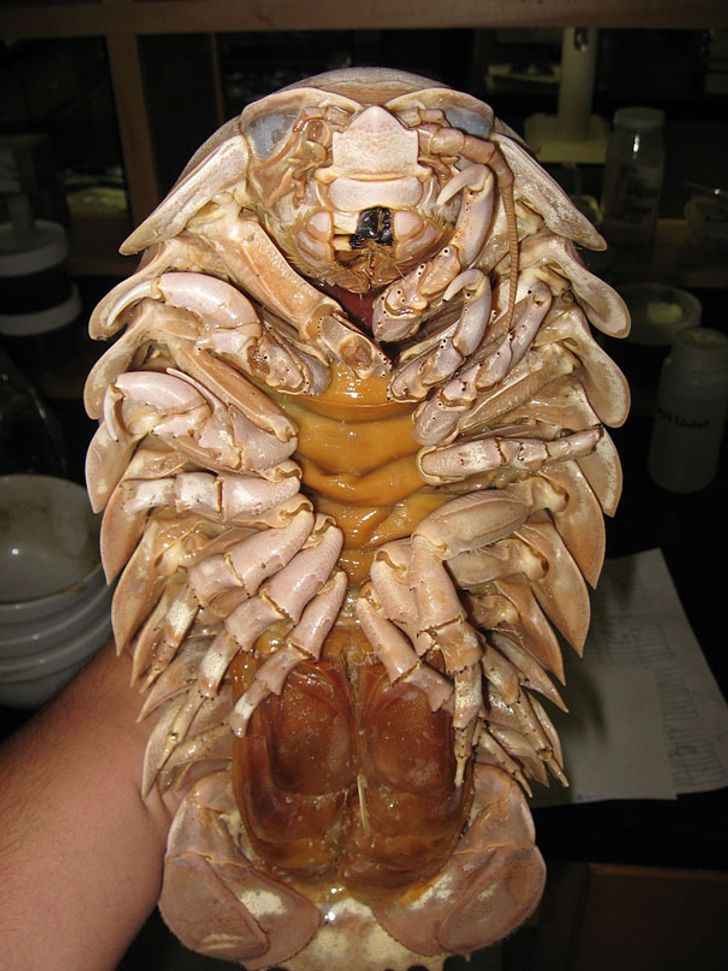
Giant Isopod: Giant Isopods prefer to live between 550 to 7020 feet deep underwater. They are called giant for a reason, some of these creatures can grow absolutely gigantic! Scientists believe that this enormous size helps them to compromise the pressure of the deep ocean. They nearly exclusively eat carrion, and when something edible is found on the ocean’s floor, they eat a lot of it because they don’t always know when their next feast will be. Since they live in such depth and getting food can be challenging, Isopods have extremely slow metabolisms. They may not need anything to eat for a few years thanks to this unique ability.
5 / 52
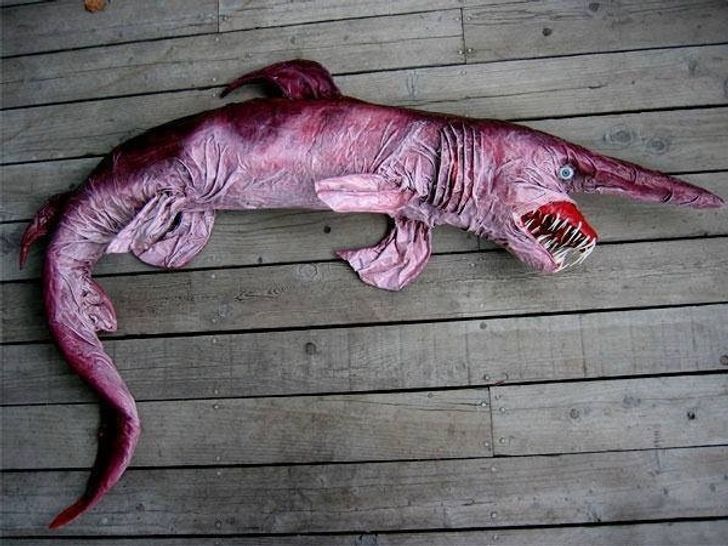
Goblin shark: The goblin shark is often called a vampire shark because it doesn’t like light and prefers living deep in the sea. Although it looks very freaky, it’s not as scary as it seems. This shark is absolutely not interested in people and mainly eats fish, crabs, and mollusks. And, unlike other sharks, this one is a pretty bad swimmer.
6 / 52
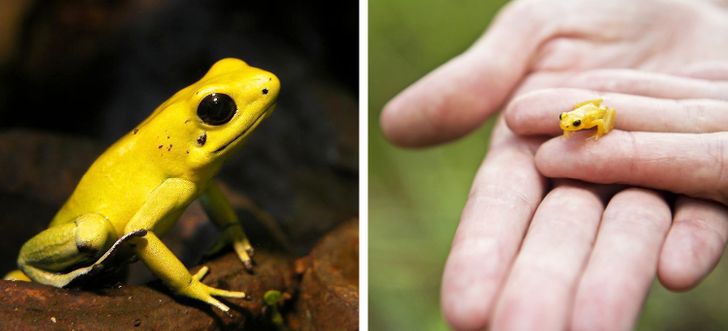
Golden poison frog: This pretty little frog is one of the most poisonous creatures in the world. They are not born poisonous, they get it from what they eat. They only use the poison for defense and it’s so strong that the toxins from just one frog can kill two elephants. These creatures are very rare and only live in the rainforest in Colombia.
7 / 52
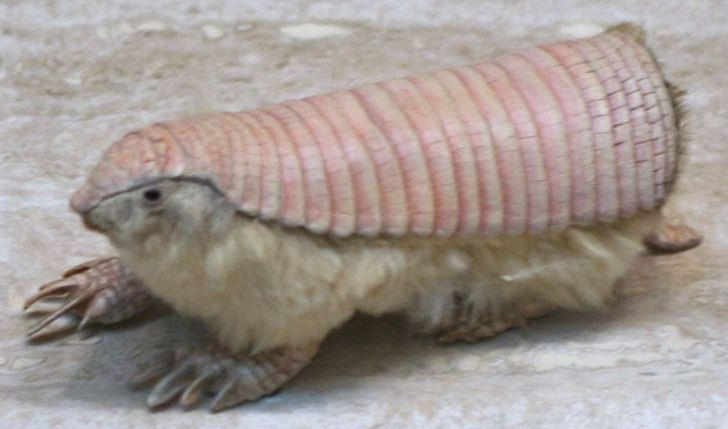
Pink fairy armadillo: Despite their very delicate size, these little creatures have very powerful claws that make them exceptionally good diggers. Their shell looks pink because the blood vessels in the shell are so close to the surface. In the deserts of Argentina dwells the remarkable pink fairy armadillo (Chlamyphorus truncatus), a 5-inch-long, quarter-pound critter with a rosy shell atop silky white hair. This smallest of all armadillos spends almost its entire life burrowing through the earth, hunting various invertebrates and chewing up plant matter.
8 / 52
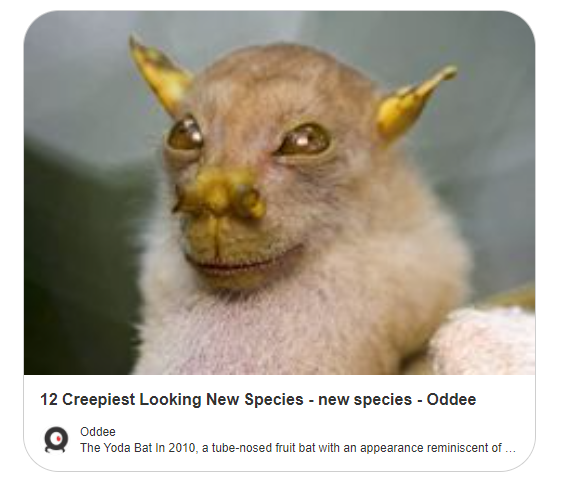
Tube-nosed fruit bat: The tube-like nostrils are the reason for this bat’s name. It likes to eat fruit and these unique nostrils allow it to breathe while it pushes its face into the fruit to suck the juice. This tube-nosed fruit bat is just one of the roughly 200 species encountered during two scientific expeditions to Papua New Guinea in 2009—including a katydid that “aims for the eyes” and a frog that does a mean cricket impression
9 / 52
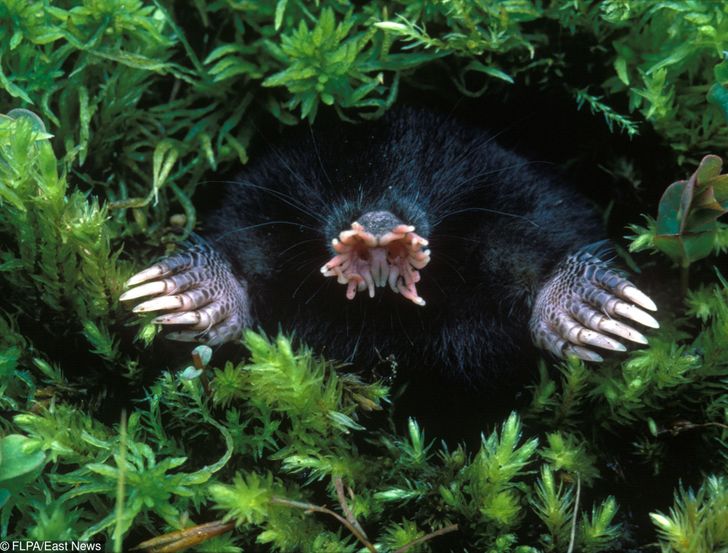
Star-nosed mole: These animals are almost completely blind but that doesn’t affect them that much because they have 22 tentacles around their nose, which have 25,000 sensors, and that makes their sense of smell extremely sensitive. They can even smell underwater. Sniffing brings molecules in the air around us into our nose, where they are detected and manifested in our brains as smells. But try the same trick underwater and you would rapidly choke or drown. Nonetheless, smell is a tremendously important sense for most mammals and at least two species have found a way to safely sniff in water.
10 / 52
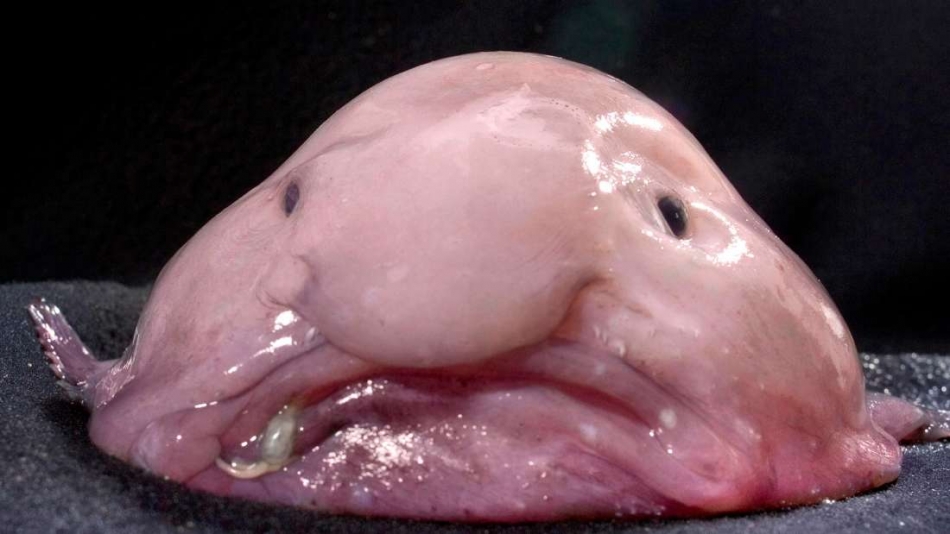
Blobfish: The blobfish doesn’t have bones, teeth or much muscle either. This is why they have a very slow lifestyle and spend their whole life crawling along the sea floor sucking small sea creatures like shellfish or crabs. A blobfish (Psychrolutes marcidus) may be the ugliest animal you’ve ever seen. In fact, the title is official: in a 2013 competition held by the Ugly Animal Preservation Society, the blobfish was actually voted as the World’s Ugliest Animal. The blobfish has small eyes, a gelatinous appearance, a large mouth, and a relatively small body and fins to go with it.
11 / 52
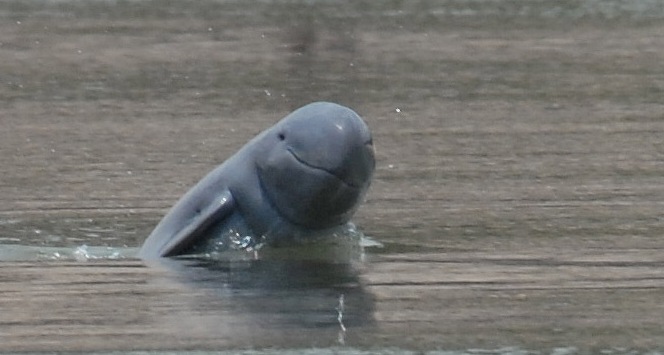
Irrawaddy dolphin: If you were to draw a dolphin, you would normally include their well-known beak. Well, not for this one! the Irrawaddy dolphin has a very unique look to it, and its round face is one of its main characteristics. Although they are not considered to be in danger of extinction, they are relatively rare and only live in a few areas of the world.
12 / 52
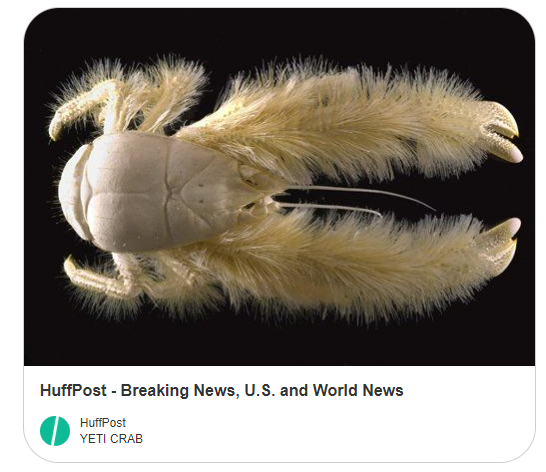
Hairy-chested yeti crab: The hair which gives this crab its name is not just scary but also practical. They actually eat the tiny microbes that grow on it. They live near the very hot hydrothermal vents in Antarctica which make their life a constant adventure, as one wrong move could mean being boiled or frozen.
13 / 52
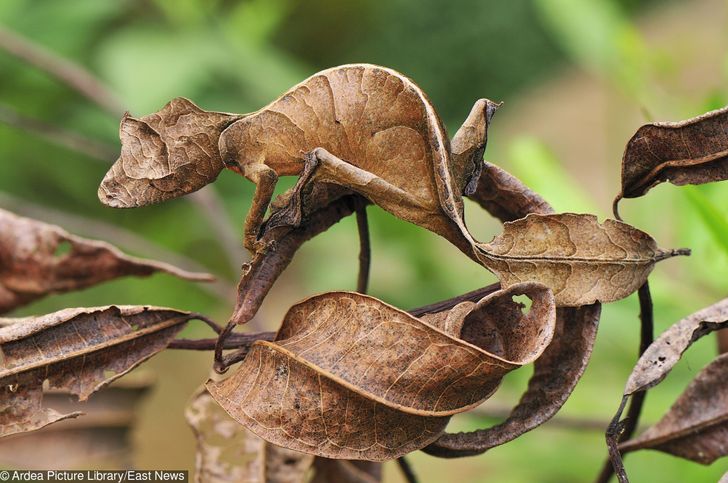
Satanic leaf-tailed gecko: These creatures have excelled in their camouflaging skills. It is almost impossible to see them in wild. But they don’t rely on this skill when hunting, they look like a leaf only when they rest. They are also very fussy about where they live and Madagascar is the only place where they can be found.
14 / 52
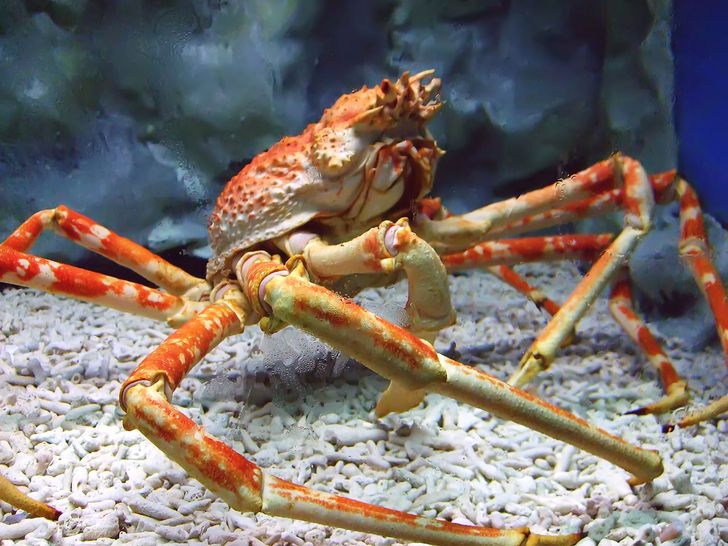
Giant spider crab: There’s a reason why it’s called the Giant Spider Crab, it has a leg span of up to 3.8 meters which makes it seem like it came straight from a horror movie. They live in very deep waters and are very good at camouflaging, they even learned how to decorate themselves with sea sponges and anemones to stay safe.
15 / 52
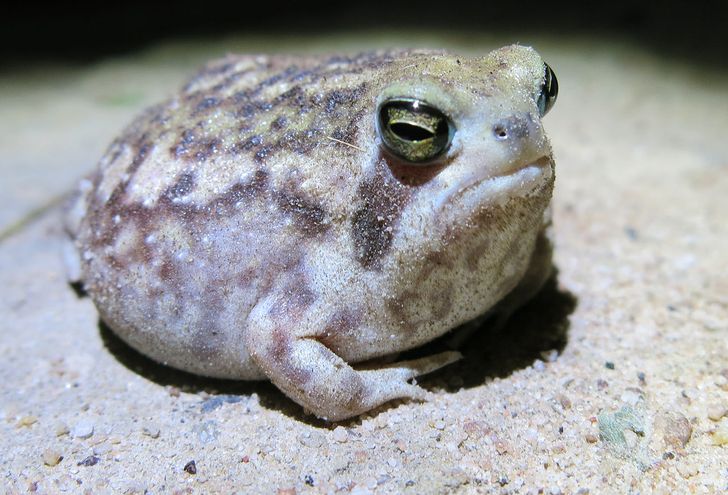
Desert rain frog: These frogs are tiny and don’t even grow to 1cm, which makes them the smallest frogs in the world. Unfortunately they are an endangered species, mainly because of people moving in on their desert territory. They make a very interesting sound reminiscent of a kid’s squeaky toy.
16 / 52
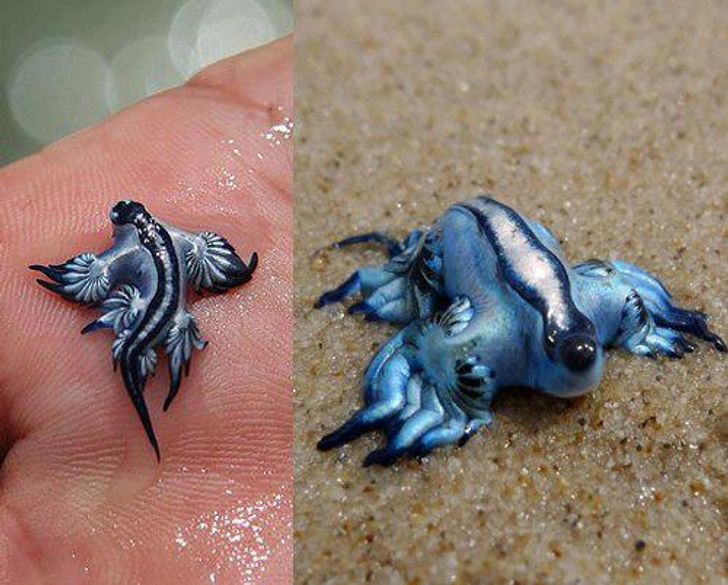
The blue dragon: This pretty sea slug developed the perfect coloring for hiding while floating on the sea surface. The sapphire side of the body faces upward and blends perfectly with the blue water, while the silver part faces downward so it can’t be seen by predators from below. The blue dragon is not poisonous but it can gather poison from what it eats, concentrate and store it, and use it if it gets attacked.
17 / 52
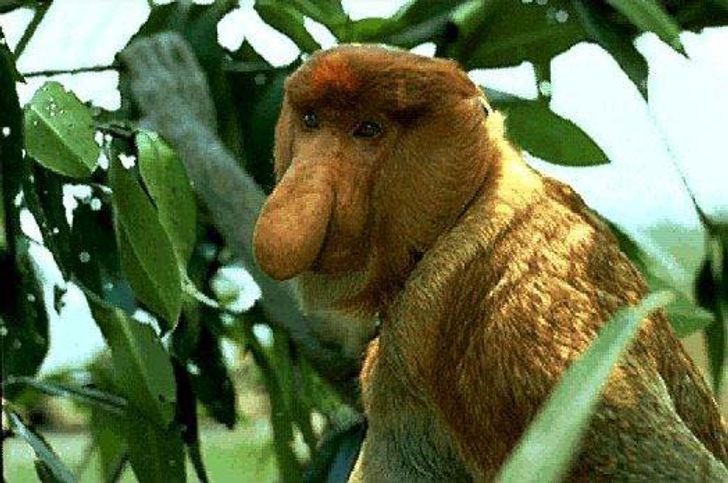
Proboscis monkey: When you see this monkey, the first thing you notice is the nose. It can be up to 7 inches long. The males generally have larger noses than the females. Monkey researchers believe that the larger the male’s nose is, the more attractive it looks to females. Proboscis monkeys are endemic to the jungles of Borneo, never straying far from the island’s rivers, coastal mangroves, and swamps. They are a highly arboreal species and will venture onto land only occasionally to search for food. They live in organized harem groups consisting of a dominant male and two to seven females and their offspring. Various groups often congregate near water at night to sleep.
18 / 52
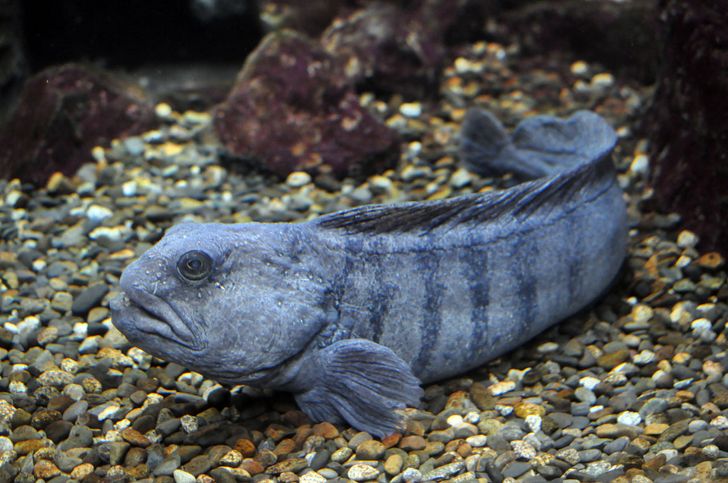
Wolf fish: This is another example of the saying “Don’t judge a book by its cover.” The wolf fish may look scary and aggressive, but it is actually very shy most of the time. It has learned how to produce its own internal antifreeze which allows it to live in very cold conditions. Wolffish, any of five species of large long-bodied fishes of the family Anarhichadidae (order Perciformes), found in northern Atlantic and Pacific waters. The largest species may grow to a length of about 2.3 metres (7.5 feet). Wolffishes have a large head and a long tapered body surmounted by a single long dorsal fin. Their formidable teeth consist of large canines and heavy molars capable of handling a diet of crabs, starfishes, sea urchins, and other prey.
19 / 52
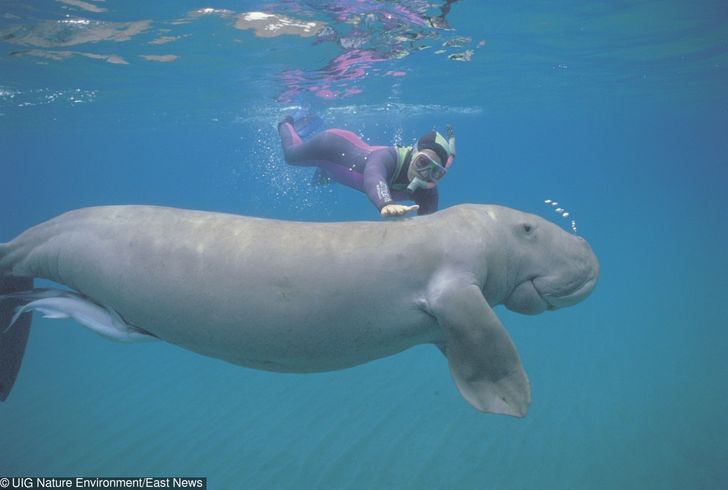
Dugong: They are very big, but very gentle and peaceful animals. Dugongs are the only marine mammals which are 100% vegetarian. To support their size, they have to eat about 50kg of sea grass every day. The shape of their face and upper lip are perfectly designed for grazing on sea grass from the ocean floor.
20 / 52
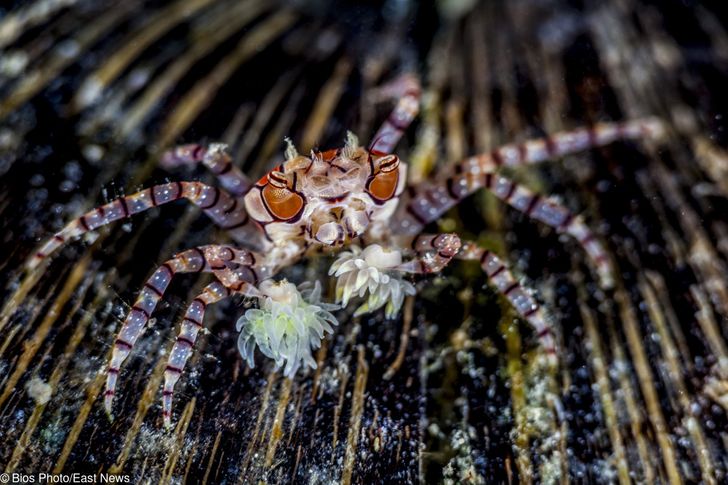
Boxer crab: These crabs became famous because of the way they move. They always carry a small sea anemone in each claw, like boxing gloves, which is how they got their name. They do this for 2 reasons – defense and food catching. Boxer crabs feed sea anemones in exchange for defense from danger — serving as a prominent example of symbiosis in the animal kingdom. Lybia tessellata is a tiny crustacean native to the tropical Indo-Pacific Ocean. These crabs are usually patterned with pink, brown, or yellow and reach about an inch in width. They bear slim claws and a front pair of walking legs that are longer than the other three pairs.
21 / 52
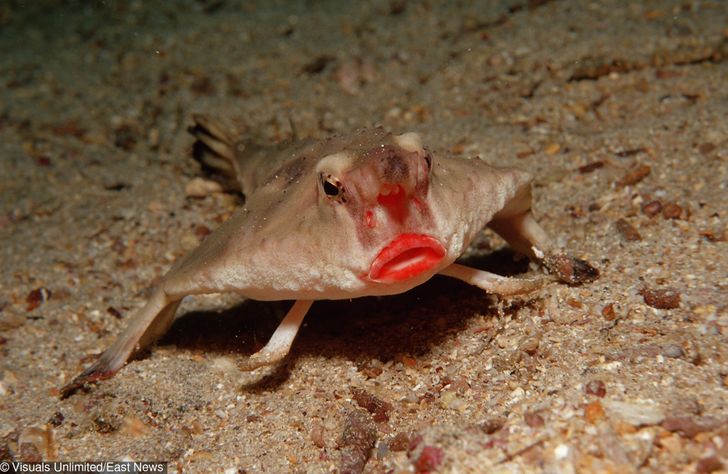
Red-lipped batfish: This very strange looking fish can be easy recognized by its bright red lips. It really looks like this fish is wearing lipstick! They also have a very unique way of “walking” on the bottom of the ocean using their modified fins. Red lipped batfish is unique in the world with a feature. This fish is only fish species in world that can walk with 4 feet. Although its fins are designed to walk, sometimes it can swim as shaking its tail but this doesn´t happen everytime. Maybe its discontented facial expression is because it has to walk over.
22 / 52
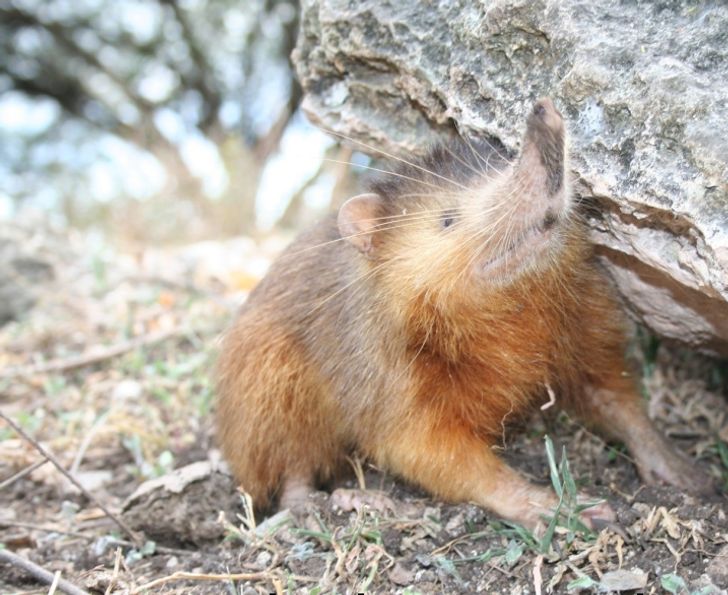
Hispaniolan solenodon: These funny looking animals have a unique signature look with their unusual, elongated, and very flexible snouts. They have a ball-and-socket joint at the base of their snout, just like a human shoulder joint. It increases the flexibility of their snout which plays a key role in helping them find food.
23 / 52
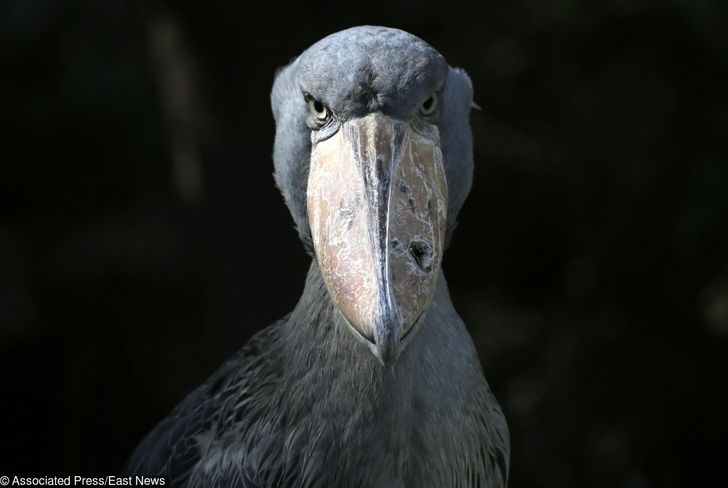
Shoebill: This is an incredibly large bird, half-stork, half-pelican, with wings that may span up to 2.5 meters. They often live close to hippos and when those massive mammals bulldoze water and force fish to the surface the shoebills are able to catch them easier. They were named after their beak which is very effective for catching fish. The shoebill is also reported to have a gargoyle-like ability to stand motionless for hours while hunting.
24 / 52
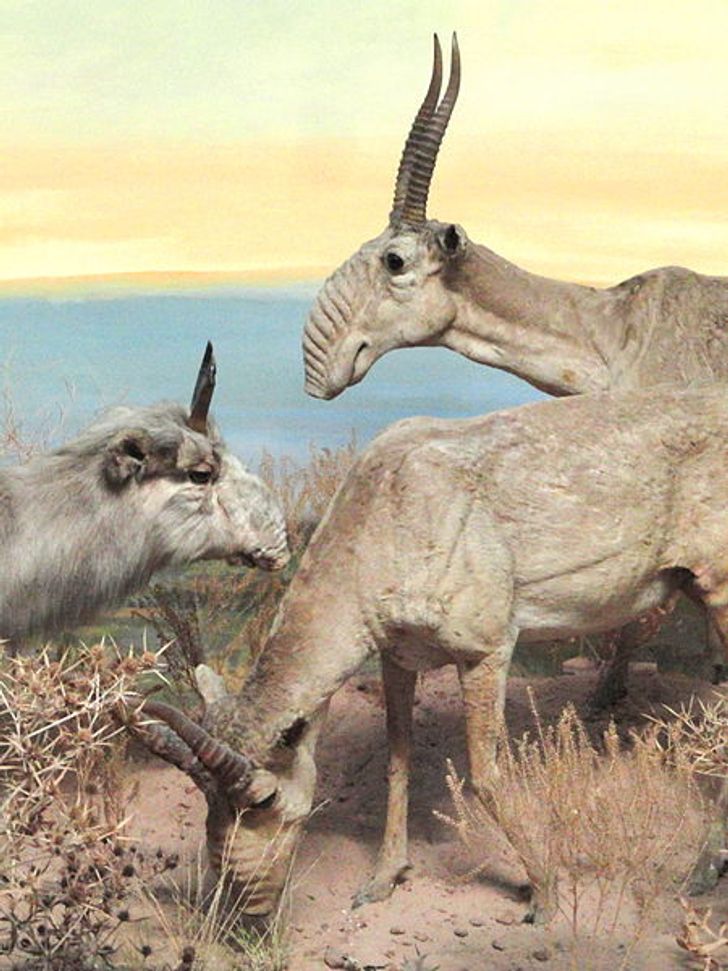
Saiga: This antelope can be easy recognized by its head with a very mobile nose and long colored horns. Unfortunately, saiga are listed as critically endangered and there is a high chance of the full extinction of this beautiful animal in the wild. The population of a rare type of antelope has more than doubled since 2019, in a remarkable turn around in fortunes. According to the first aerial survey in two years, the number of saiga in their Kazakhstan heartland has risen from 334,000 to 842,000. There were fears the animal was on the brink of extinction following a mass die-off in 2015.
25 / 52
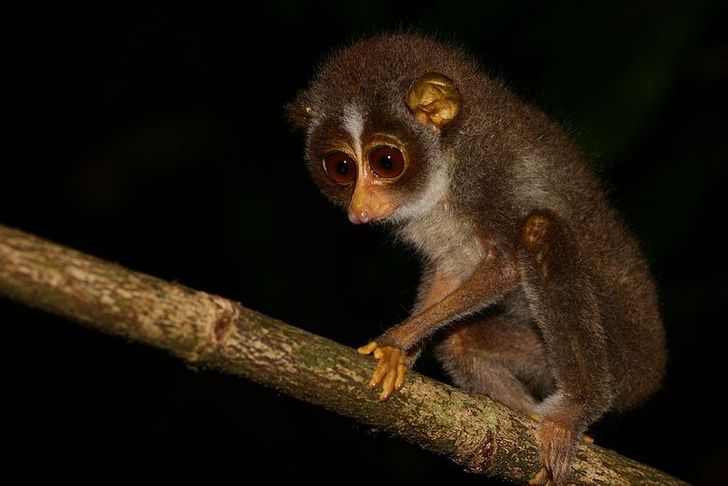
Slender loris: This is a very slow animal that mainly lives on trees. They look very funny with huge eyes and a surprised look on their face. That expression gave them the name “loris” which means “clown.” They don’t have a tail and use their hands and legs to move from one tree to another.
26 / 52
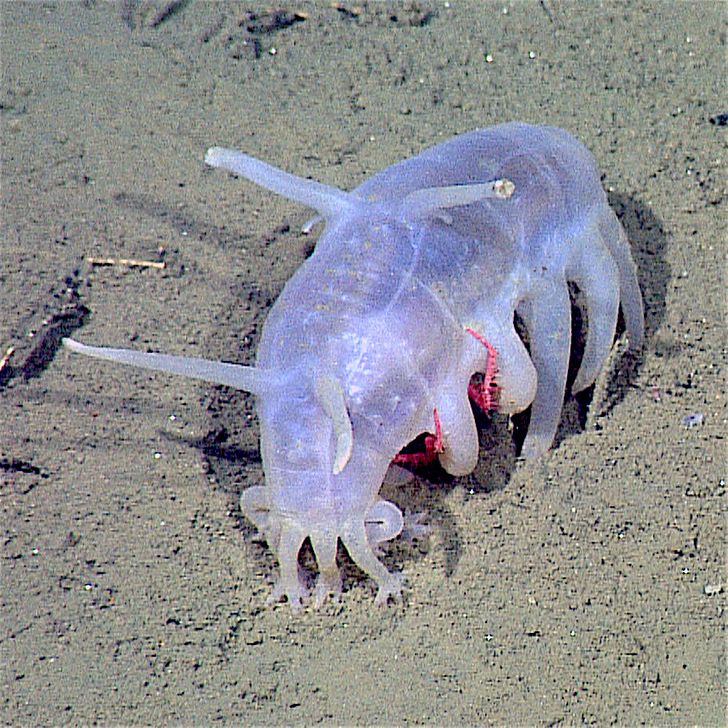
Sea pig: These animal are not rare but they got into our selection for their weird appearance. They live in all of the world’s oceans, but usually so deep that most of us will never see them. They play an essential role in the world’s ecosystem by basically cleaning the ocean. They spend their whole life “walking” on the ocean floor and eating whatever they find, from decaying plants to dead animals.
27 / 52
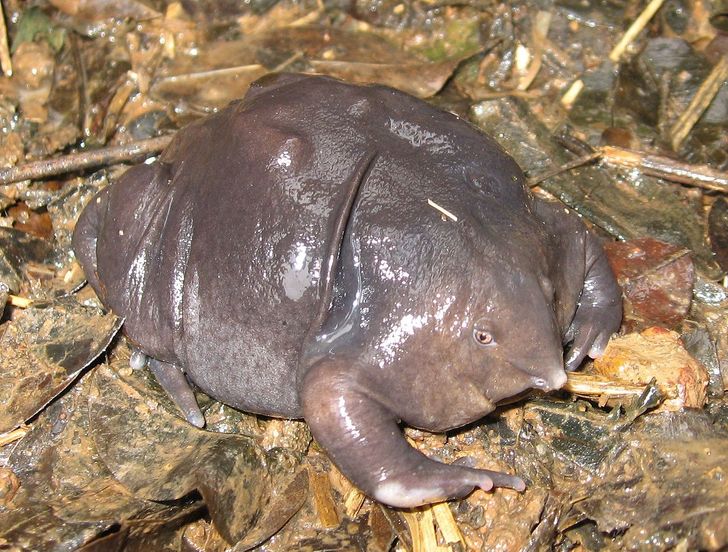
Purple frog: It’s no wonder how this creature got its name. The purple frog is the only survivor from a group of amphibians which evolved 130 million years ago. Spending most of its life underground, the adult purple frog only comes to the surface for a few weeks a year for breeding. It’s not a bright purple, it’s more of an earthy purple color that’s unique to a species known for wide-ranging colors. The color is varied from dark across the back to an almost light brown on the stomach and feet.
28 / 52

Arapaima: This fish is huge and can grow up to 4.5 meters long. They live in very dirty water which doesn’t have much oxygen in it. To survive, this fish developed a special swim bladder and can gulp air from the surface. They have massive mouths and can catch not only a relatively large fish, but even a bird, when cruising on the surface.
29 / 52
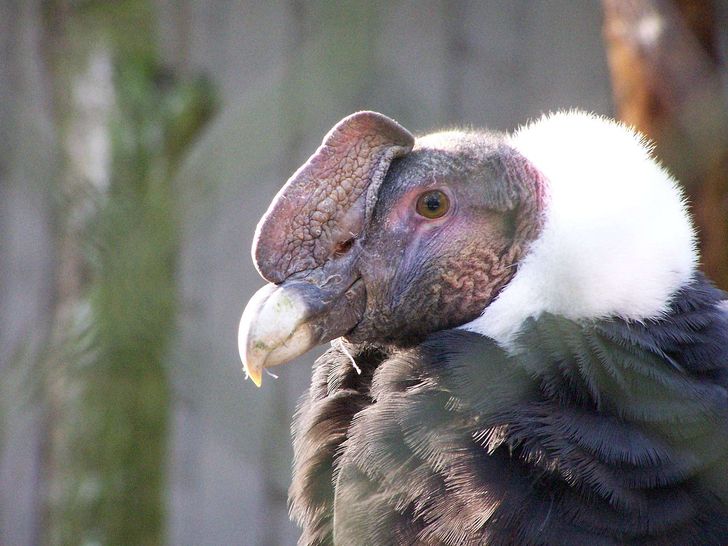
Andean condor: This is a REALLY large bird. Its wingspan can reach 3 m (10 ft) but despite such impressive wings, the Andean Condor is not the greatest flyer. It struggles to stay aloft when flying, mainly because of its weight, but it feels very comfortable in windy areas where it can glide on air currents which can help it rise to very impressive heights.
30 / 52
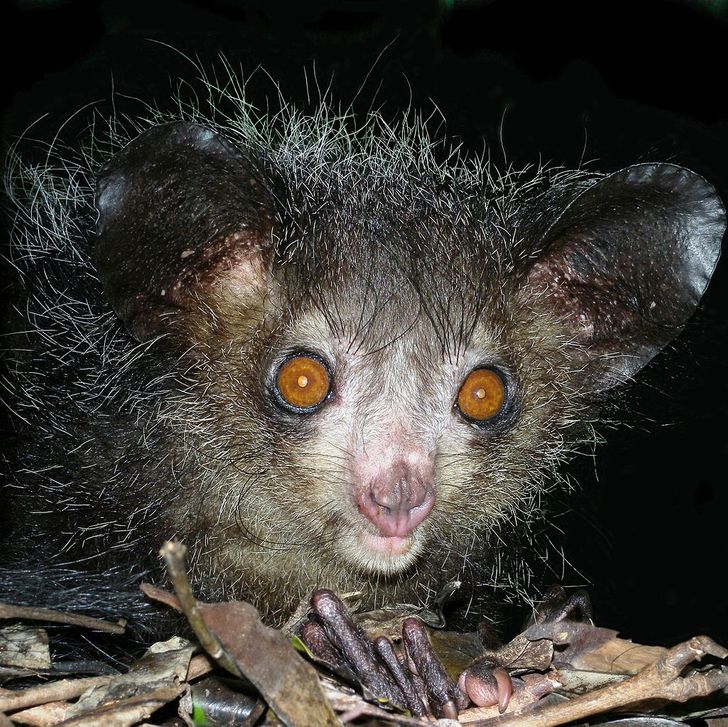
Aye-aye: This is a very weird looking animal. They only live on the island of Madagascar and there was a time when they were thought to be extinct. Although some animals were found in the mid-20th century, they are still considered to be endangered. An interesting fact about them is that their teeth never stop growing. To keep this under control they constantly chew nuts and wood.
31 / 52
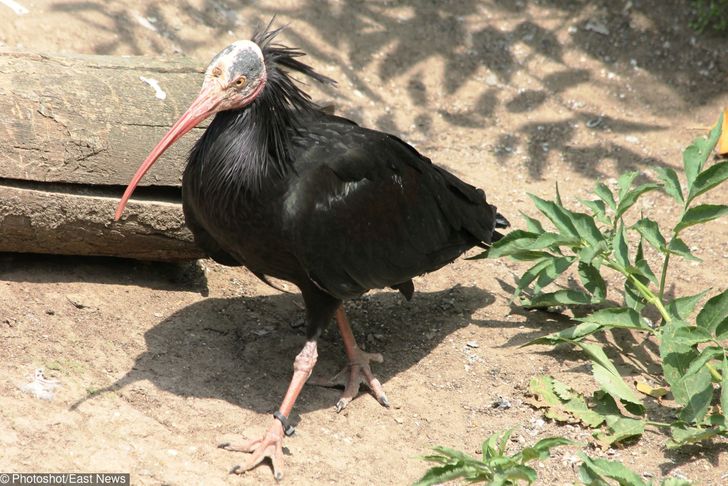
Northern bald ibis: This bird prefers to live close to running water and normally stays in a group. Its distinguishing characteristic is a black glossy body and absolutely unfeathered red face. They used to be wide spread but water pollution and habitat issues have made them critically endangered. It’s believed that there are only about 500 birds left in Morocco and just a few in Syria.
32 / 52
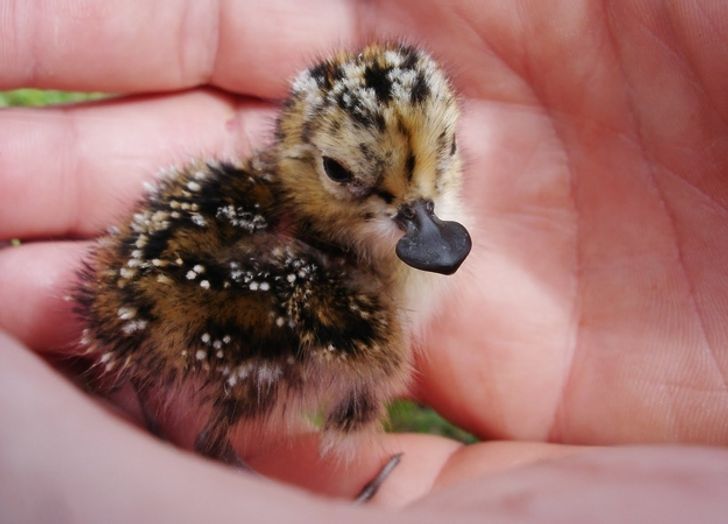
Spoon-billed sandpiper: This is one of the rarest birds in the world. It has a very unique looking bill, which gave this bird its name and looks like a spatula. This bird breed lives in the north of Russia along the Bering Sea coast, migrating down for winter. There was a time when they nearly became extinct and a lot of successful efforts are currently being made to save them.
33 / 52
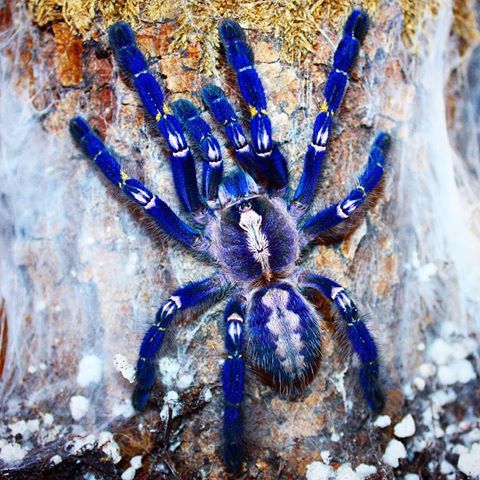
Gooty sapphire ornamental tarantula: Most of people don’t like spiders, but you have to admit that this is a very pretty one. Although there has never been a reported human death from its bite, it’s a good idea to stay away from it. These spiders can be quite aggressive and their venom can cause severe pain.
34 / 52
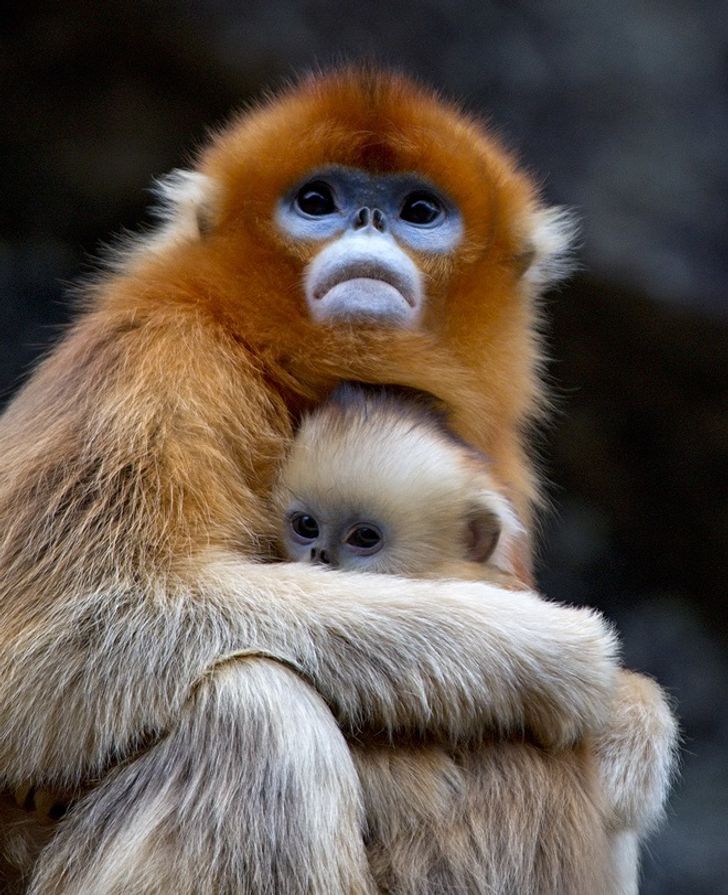
Tonkin snub-nosed monkey: This is a small, cute monkey which can only be found in some parts of China. It has nostrils very close together like a human and human-like hands with long fingernails. They have a thick pad of skin around their tail which works as cushion when they are sitting. Since they live in a very cold climate, they have developed a beautiful coat which covers their entire body except for their eyes, nose, and mouth.
35 / 52
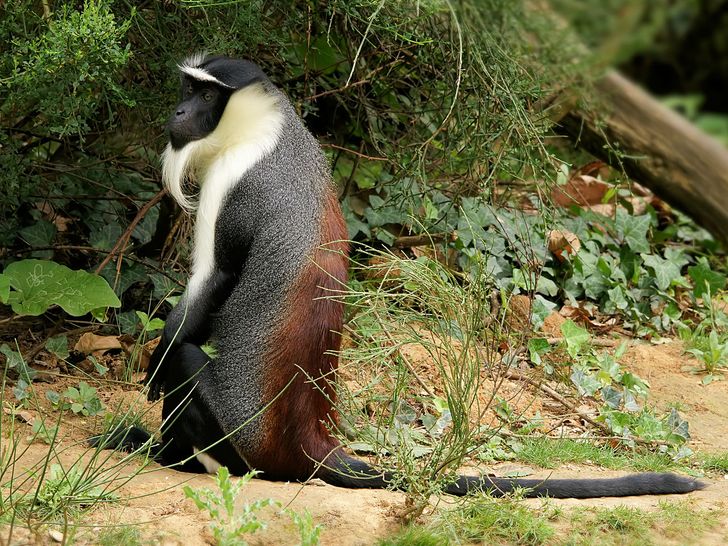
Roloway monkey: Predominantly black, with a few white patches at the throat and the arms, roloway monkeys are distinguished by their pointed white beards. They are critically endangered and we can only hope that these fascinating animals stay with us. They are very particular about where they want to live and have only been found in a few areas of Ghana and the Ivory Coast.
36 / 52
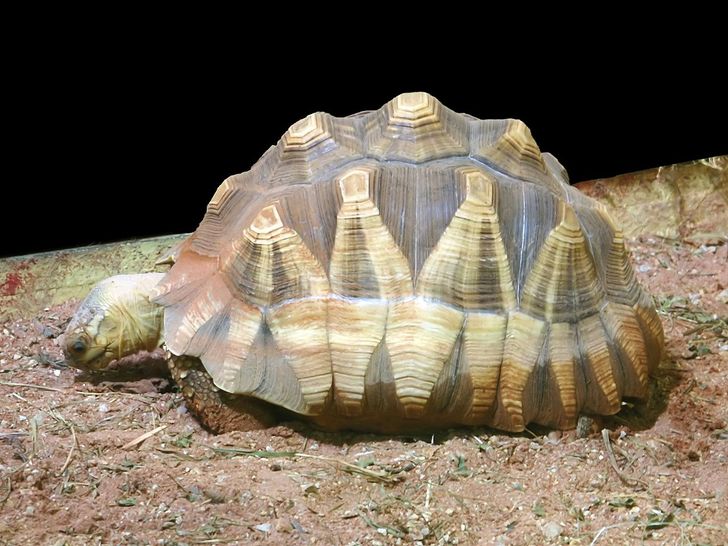
Angonoka tortoise: This is another species endemic to Madagascar that is critically endangered. These tortoises have a very cool shell coloration and structure and very noticeable growth rings on each segment. Sadly to say, the number of these amazing tortoises is still going down.
37 / 52

Jamaican iguana: The Jamaican iguana is endemic to Jamaica and was believed to be extinct until a local hunter bumped into a few of them in 1990. At the moment only 50 survivors have been reported which makes the Jamaican iguana the rarest lizard on the planet. Historically, these iguanas used to inhabit a much larger range on the southern coasts of Jamaica, but today they can only be found in a location known as the Hellshire Hills. This dry forest full of rocky, limestone outcrops is considered one of the world’s most threatened ecosystems, and iguanas can really only be found in its most remote corners.
38 / 52

Marabou stork: A giant bird with a giant appetite, the Marabou will eat just about anything. They actually play an essential role in the balance of their ecosystem by cleaning up the carcasses of dead animals. They have an ugly red sack hanging from the outside of their throat that they can inflate to show their dominance.
39 / 52
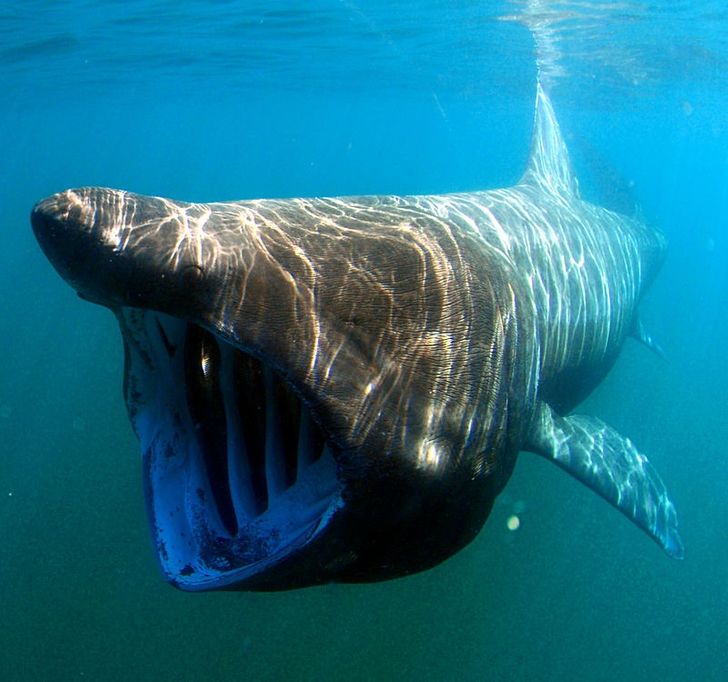
Basking shark: The basking shark is a plankton eating shark, but it looks terrifying. These sharks are the second largest on the planet and known for having a massive liver, which comprises approximately 25% of their body weight. They were considered endangered not long ago due to extensive hunting, but their numbers have been rising lately.
40 / 52
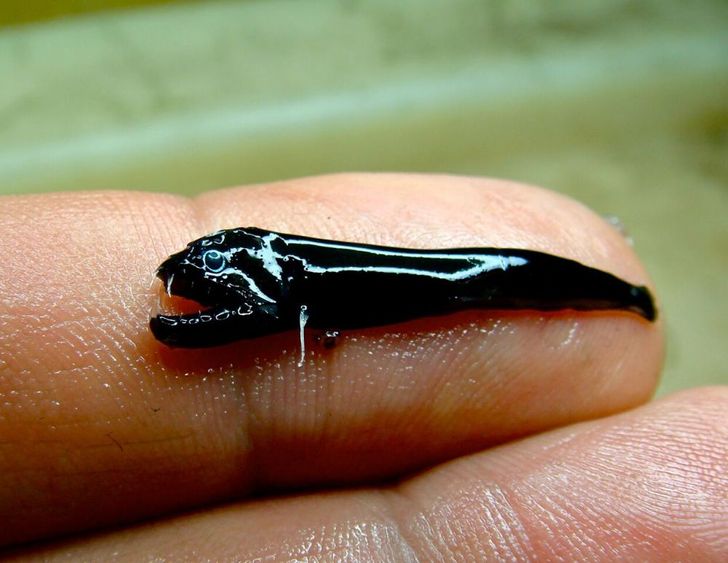
Scaleless blackfish: This tiny, very bizarre looking fish was recently discovered living inside an underwater volcano near Australia. It certainly fits into our selection because of how weird it is! It was found only a few years ago so we should take it as a message that ocean still holds many surprises for us.
41 / 52
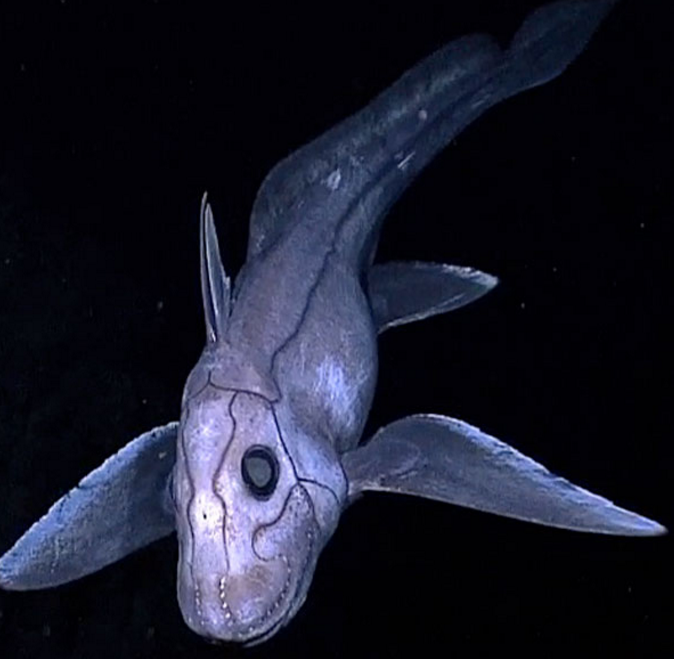
Chimaera: This fish is related to sharks. Their unique characteristic is that they have a cartilage skeleton and despite their large size they are very graceful swimmers. A chimaera is a strange fish that has a network of lines over its surface. The lines often look like seams. They give the impression that the animal’s body has been created by stitching together parts of other creatures. The appearance is reminiscent of the chimera, a creature in Ancient Greek mythology whose body consisted of parts of different animals joined together.
42 / 52
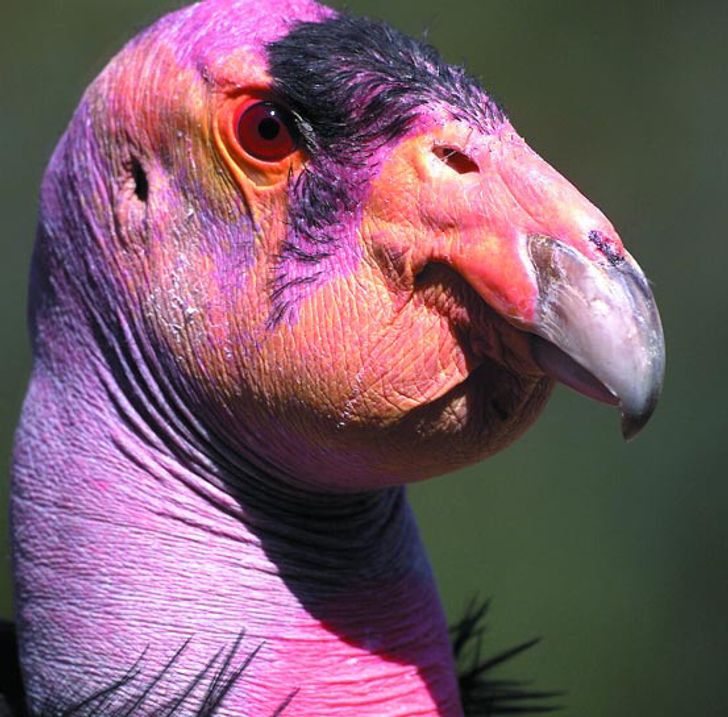
California condor: When Europeans arrived in North America, condors could be found everywhere. By 1985 the entire known wild population had been reduced to just 9 birds. After a lot of effort and a large program to increase the population, the number was significantly enlarged but they are still considered to be one of the world’s rarest bird species. Condors are so large that they can be mistaken for a small, distant airplane. When in flight, the movements of the condor are remarkably graceful. They really excel at gliding, sometimes going for miles without a single flap of their wings.
43 / 52
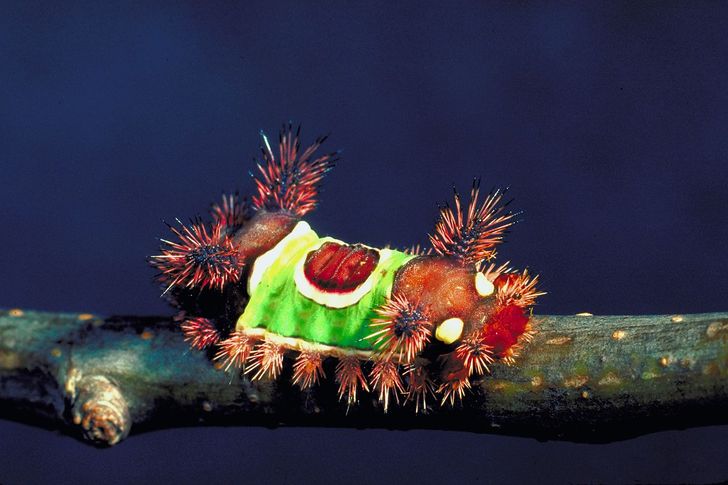
Puppy-face saddleback caterpillar: This interesting-looking caterpillar really looks like a puppy wearing a coat and is much prettier than its “grown up” version – a moth native to North America. Most of its body is covered with hair which produces an irritating venom and if you touch it you are very likely end up with a painful swollen rash.
44 / 52

Tarsius: These little primates have a very interesting appearance and look more similar to lemurs, than monkeys. They spend their entire life in trees, sleeping, eating, reproducing, and just jumping from one tree to another. Unfortunately, they are extremely rare now, mainly because of habitat loss.
45 / 52
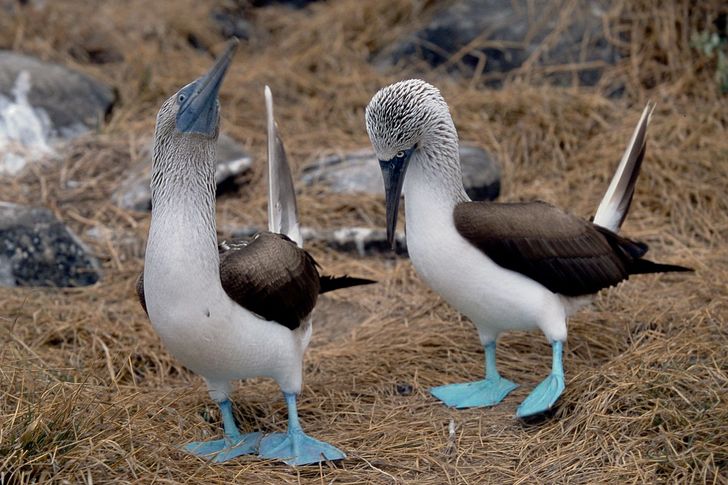
Blue-footed booby: This gorgeous bird looks slightly surreal with its bright blue feet. They got their name from the Spanish word “bobo” which means “foolish.” The reason for this is that these birds walk very funny on land. North Seymour is one of the Galapagos’ best seabird breeding grounds, with blue-footed boobies occurring at high frequency. Large breeding populations can also be found on many other islands south of the equator – including Espanola, Fernandina, Floreana, Isabela, Pinzon, and Santa Cruz.
46 / 52
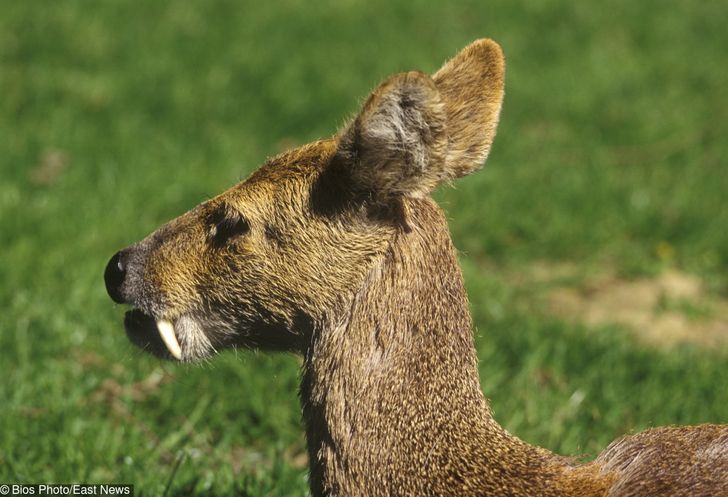
Chinese water deer: These beautiful animals have a very unique feature, male deer have long canine teeth, which can grow up to 8cm long. They are very territorial and males use their fangs in fights. They are also fantastic swimmers, capable of swimming for several kilometers between islands. It is the only species of deer in which males lack antlers; instead, they are armed with long, curved, and sharp upper canine teeth that protrude from the mouth. These tusks may exceed 5 cm (2 inches) in length. The water deer is also the only deer with inguinal glands.
47 / 52
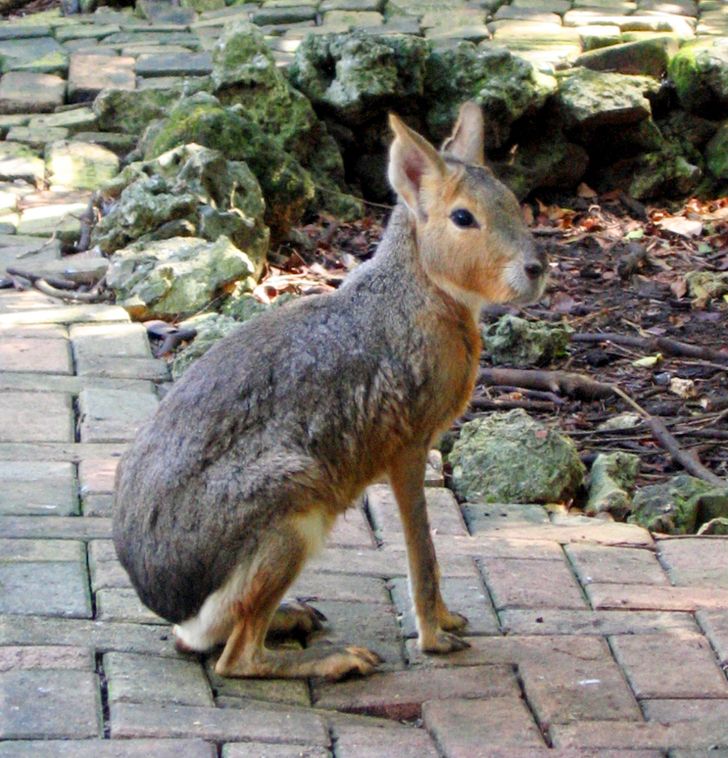
Patagonian mara: This animal, which looks like a crazy mixture of a few animals – the ears of a rabbit, the front legs of a deer, the rear legs of a kangaroo, and a cute short tail. They have only been found in Argentina. The Patagonian mara is an excellent runner and jumper. It can run up to 30 mph and leap up to 6 ft in the air.
48 / 52
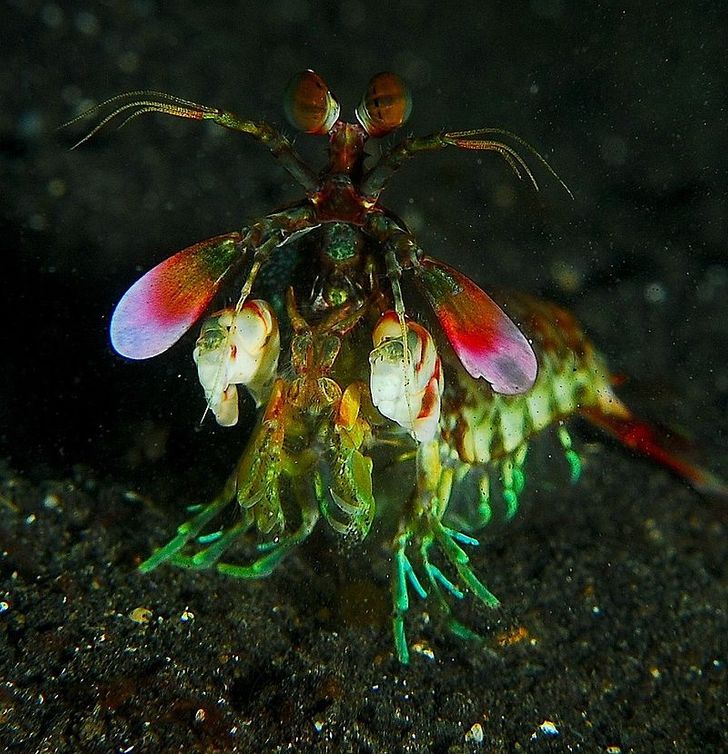
Mantis shrimp: Technically they are not shrimp, they are actually stomatopods which are relatives of shrimp, crabs, and lobsters. They have a very serious and extraordinary weapon – powerful hummer-like and very sharp claws which they can accelerate at a speed of 53 mph. When scientists study them, they have to use plastic tanks because this little thing can easily break glass.
49 / 52
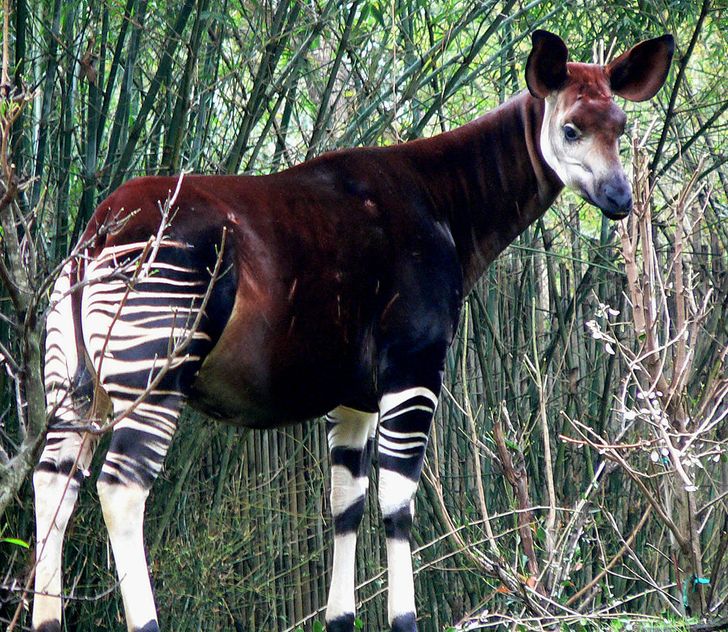
Okapi: Okapi have stripes like a zebra but their shape resembles their close relative, the giraffe. The males have a feature found only in these 2 animals: small horns on their forehead that are covered in skin which never shed. Okapi also have super-long tongues which they can wash their eyelids with.
50 / 52
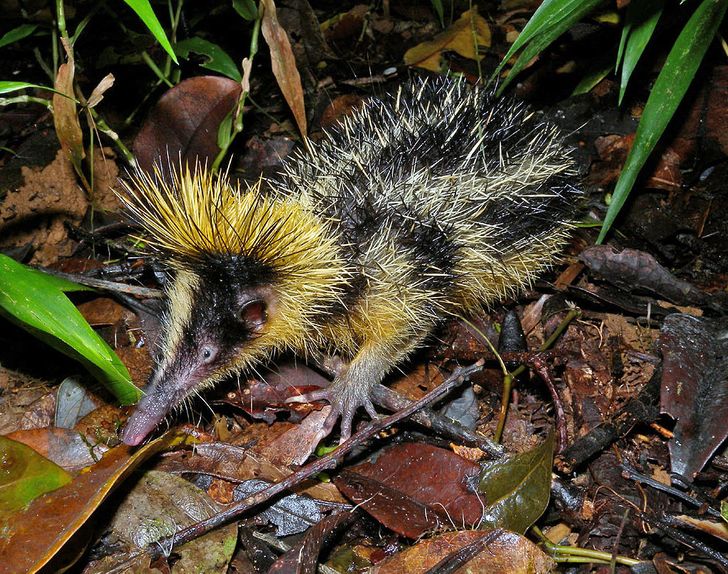
Lowland streaked tenrec: This is one of the most unusual looking animals that can only be found on the island of Madagascar. It looks like a cross between a shrew and a hedgehog. They can make very weird sounds called stridulations by moving the spines on their back. Some insects like crickets make this sort of sound, but these animals are the only mammals who can do this. They also click their tongue and use this noise for communication.
51 / 52
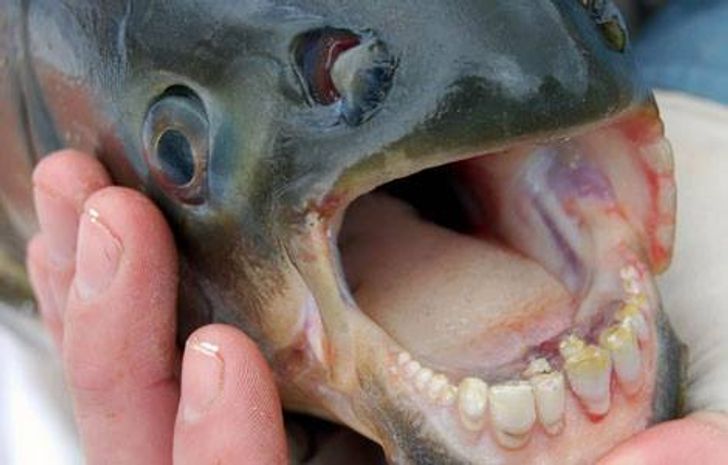
Pacu fish: Pacu fish became well-known for the shape of their teeth, which are not sharp and pointy like most fish have, but flat and more human-like. This tooth shape allows pacu fish to crunch food like nuts. Pacu are related to piranhas, but happily eat plants as well as sea protein.
52 / 52

Bonus: Northern white rhino. This year the world said goodbye to the last male northern white rhino, and right now we only have two of these beautiful animals left on the entire planet. They are under watch 24/7 and armed by guards. But unfortunately, both of the rhinos left are female which means that unless scientists come up with some bright idea, our generation will soon be facing a very sad reality: the complete extinction of these animals. This should serve as a lesson to everyone who reads this article. Nature is fragile and some damage is irreversible. Unless we start taking care of our planet and its inhabitants, future generations will live in a very different world, and not in a good way. This time for change starts now. The world around us is full of amazing things and we couldn’t possibly mention everything. If you want to share something interesting, that would fit into this article, tell us about it in the comments.
